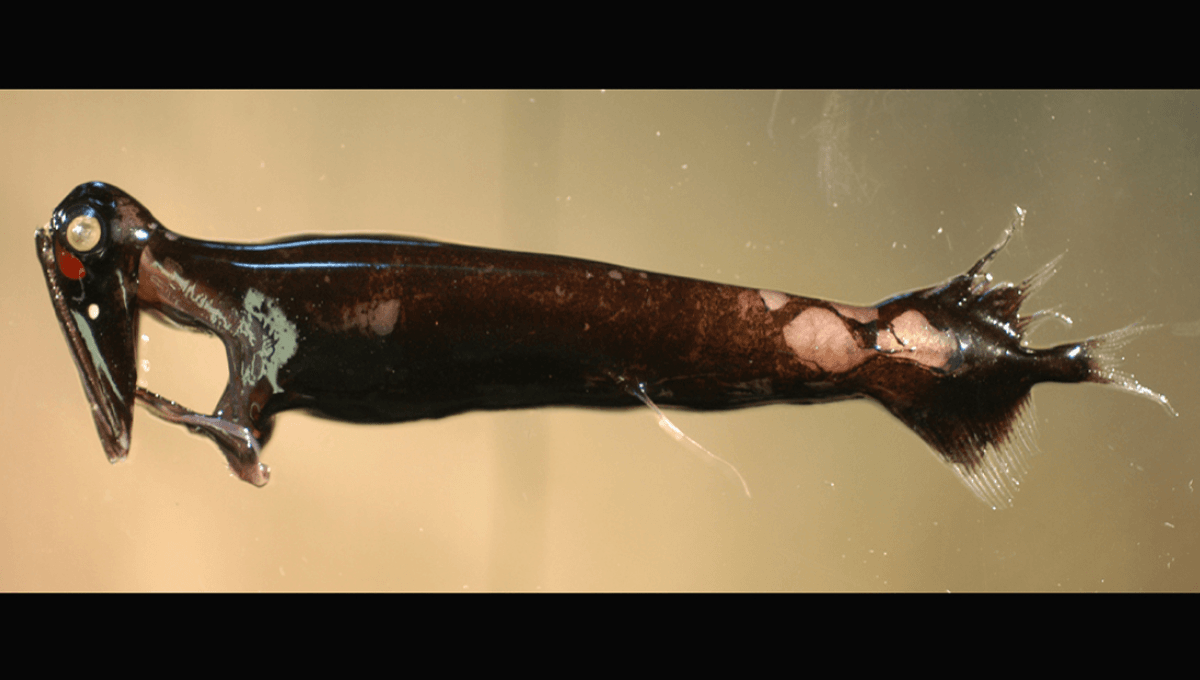
A deep-sea predator has raised a few eyebrows after revealing that, when looking for love, the eye size of males increases significantly. It’s only the second time sexual dimorphism in the visual system has been established in fish, making the male dragonfish something of an anomaly among vertebrates.
Bioluminescence is a crucial means of communication for creatures in the deep sea, where the Sun’s light can’t reach. For dragonfish in the family Stomiidae, the males shine brighter than the females, making them easier to see, which is crucial when your nearest potential mate can be very far away. This, however, doesn’t explain how males find females.
To dig into the paradox, scientists looked at the eye size of two species of dragonfishes: Malacosteus niger and Photostomias guernei. They then modeled at what distances the males and females of each species would be able to see members of the opposite sex.
Doing so revealed a massive gap in the distance each species could see, ranging from just a few to over 100 meters (328 feet). It also became apparent that males had much larger eyes, helping to close the gap by around 5 meters (16 feet) in what appears to be an adaptation for making dating in the dark just a little bit easier.
“We’ve found that these male dragonfishes have evolved larger eyes to find females who produce less light,” said lead author and Boston College biologist Christopher P. Kenaley in a statement. “It’s rather stunning and a really important insight into how these poorly known species exist and thrive in the deep sea.”
“We don’t yet know exactly why luminescent dimorphism exists in these and other deep-sea species. Perhaps it’s a way of signalling to one another that a member of the opposite sex is nearby. Answering this question will require more studies like ours that establish a pattern of how detection distances vary with levels of dimorphism.”
Species- and sex-specific photophore arrangements are also seen in lanternfish species, which National Oceanic and Atmospheric Administration Ocean Exploration biologist Ashley Marranzino – who wasn’t involved in the study – told IFLScience could simply be a way to better advertize your interest to any passing suitors in the murky depths.
“You can imagine that in an environment devoid of sunlight, having a map of different lights on your body would be a great way to signal to another individual if you are of the same species and if you are of a different sex – basically like using flashlights in a dark room to signal if you’re compatible or not.”
An approach to consider the next time you’re headed to the club in search of love.
The study is published in Biology Letters.
Source Link: Male Dragonfish Exhibit An “Extremely Rare” Trait To Date In The Dark